Lino Rios has been a groom for several decades in the Hunter/Jumper world and recently branched out into new territory as a hay broker to make sure he could support his family.
“My oldest child graduated from High School,” he said. “And she wanted to go to Indiana Tech to study Biomechanical Engineering. My groom’s salary was not enough, so I decided to go into the hay business.”

Lino Rios with his loyal sidekick “Gordo” (R.I.P.) at one of his grooming jobs in Wellington
Motivated to Supplement Income
Rios’ wife is a long-term sufferer of Lyme disease. Knowing the uncertainty that comes with that debilitating illness, as well as supporting his children’s ambitions – with the youngest still in High School – Rios, 62, was highly motivated to supplement his income. Having sold small quantities of hay in the past, he took it to another level last winter, setting up shop in Loxahatchee with supplies of Timothy/Alfalfa and Orchard/Alfalfa mixes, imported from farms across the Midwest. He initially approached farmers to offer to sell their hay and was successful in acquiring his product to the point that he had thousands of bales distributed last winter, and this season, he aims to have over three times the quantity for existing clients as well as future customers.
Make Hay While the Sun Shines
Quality control is something Rios knows is paramount. The saying ‘make hay while the sun shines’ is less of a proverb than a hardcore requisite for hay farmers. “I go to the farms to inspect the hay,” he said. “The hay has to have moisture – not enough to be mouldy, but if it is too dry it turns to dust.”
Hay making typically requires three rain-free days. Farmers know that if their timing is off and the hay is rained on, it will either be completely ruined or salvaged for round bales and the cattle industry.
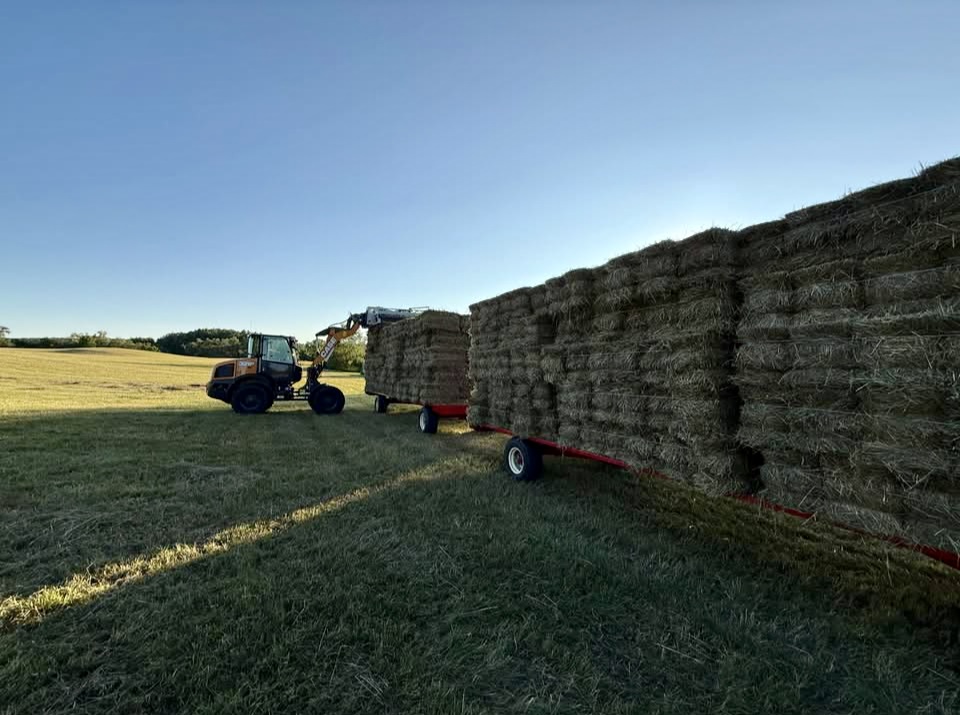
Moisture Creates Combustion
“This year in Ohio was really hard because it rained and it rained and it rained,” said Rios. And in order to have hay, you have to have at least a three-day window of dry weather. You cut it on day one, you turn it twice when it’s on the ground, and then, on the third day, you bale it.”
On the flip side – and with dire consequences – if hay has too much moisture, it becomes a fire hazard, especially when stored in confined space, such as a hay barn. “If you have too much moisture and then you put the bales close together with no air, it’s just a matter of time before that creates combustion,” he explained.
Preservatives in Hay?
When grass dries, it loses its greenness, but sometimes, that aesthetic look is revived by hay farmers. “The western hay farmers – and don’t get me wrong, not all of them, but some of them,” said Rios. “They use preservatives to keep the hay green all the time. It’s beautiful. I’m not going to deny that. It’s bright green.” While there is no narrative that such preservatives are harmful to horses, Rios poses the question: “Is it just another additive that they don’t need?”
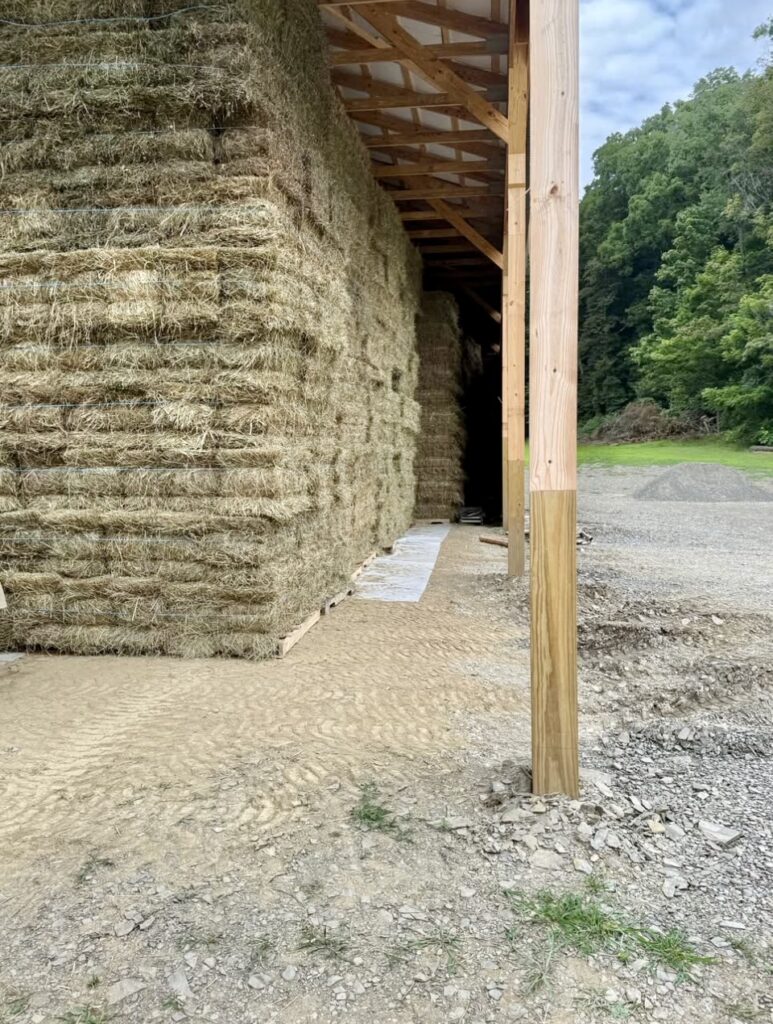
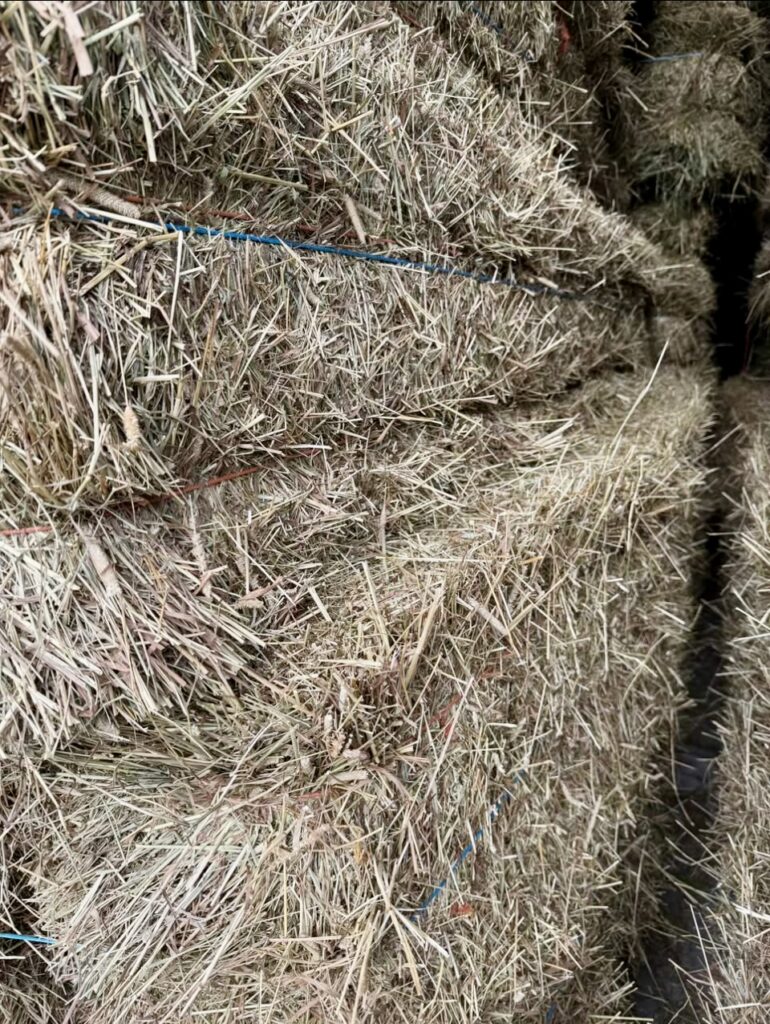
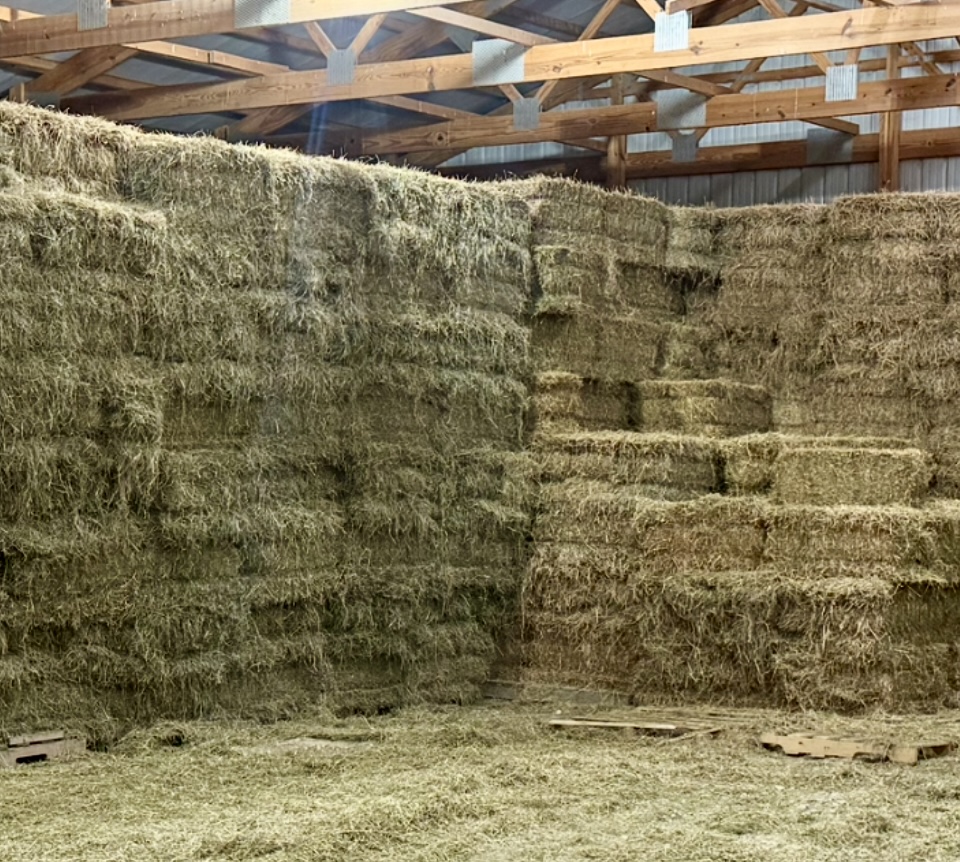
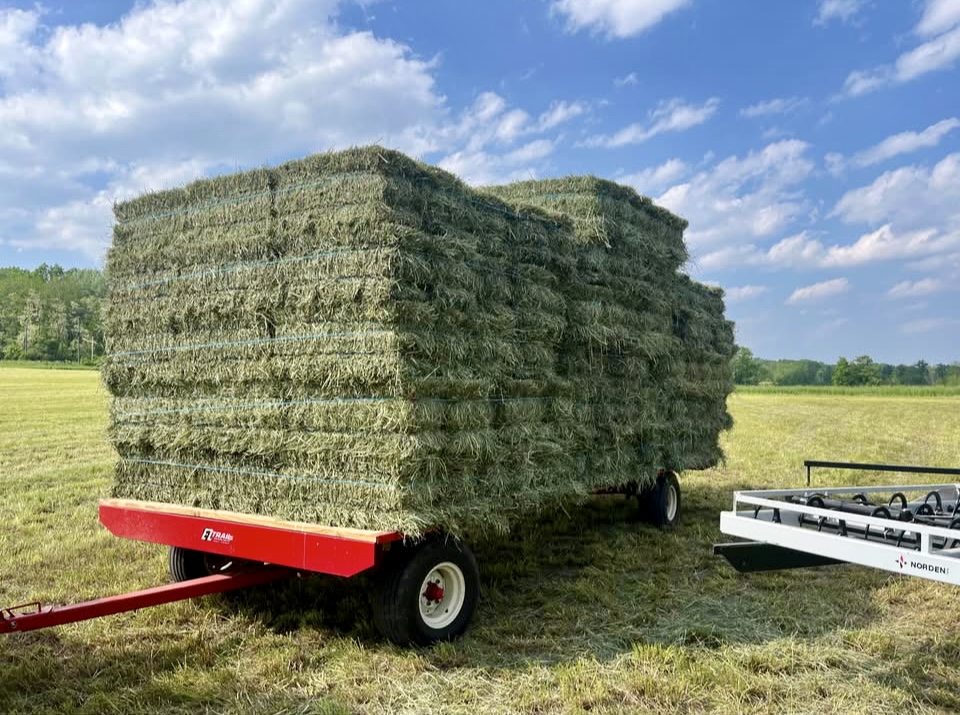
Lino’s first cut Timothy/Orchard mixed hay comes from upstate New York and costs $15 per two string bale (if picked up in Loxahatchee). Delivery is possible as well.
Transportation Costs
The farther away the hay field, the higher the transportation cost, which is reflected in the price. Rios also points out that when hay arrives in Florida, having come all that way, “you can’t always be sure of what you are going to get.”
Ten Loads of Hay for Clients in Wellington and Around
Last year, he brokered three to four loads, some 2500 bales. This year, he is planning to do a little more. “I’m aiming for ten loads of hay. “That’s my goal,” he said. Setting up shop in November, Rios will be open for business through April. Being able to circulate semi loads in and out of his base next to Wellington is a plus for his clients. “It saves them a lot of money and storage because they can use their storage, which was meant for hay, for something else – like a garage. And stalls are really expensive, so it does not make sense to use them for hay storage.”
$5 Per Bale Cheaper
Rios’ overheads are minimal compared to those of some of his competitors, which is reflected in his prices. “I try to keep my prices low,” he said. “I’m usually about $5 per bale cheaper, and when you have 30 or 40 horses to feed, that saves a lot of money.”
Types of Hay
Equestrian disciplines will dictate the type of hay preferred by his clients. He has two or three large clients – Hunter/Jumper barns with 30 to 40 horses under their care. “My clients are great,” said Rios. “And I am hoping to find more like them this season.” For hunters, the preference is the Orchard/Alfalfa mix. “It gives them that roundness,” Rios said. “But it does not make them hyper. For jumpers and ponies, they usually feed Timothy/Orchard.”
Grooming and Selling Hay in Wellington
Rios plans to split his year between working as a Hunter/Jumper groom for Kristy and Jim Clark of Artemis Equestrian Farm, owning some of Brazilian rider Rodrigo Pessoa’s horses, based in Connecticut in the summer and in Florida for the winter season, to sell his wares. “It is a change from grooming,” he said. “But I had always been involved in the hay business in a small way,” he said. “It is a great way to make extra income for my family, and I also enjoy knowing that I’m providing my clients with really good quality hay.”
To get in touch with Lino, call: (513) 226-8914 or email him: speedyrios1965@yahoo.com.


